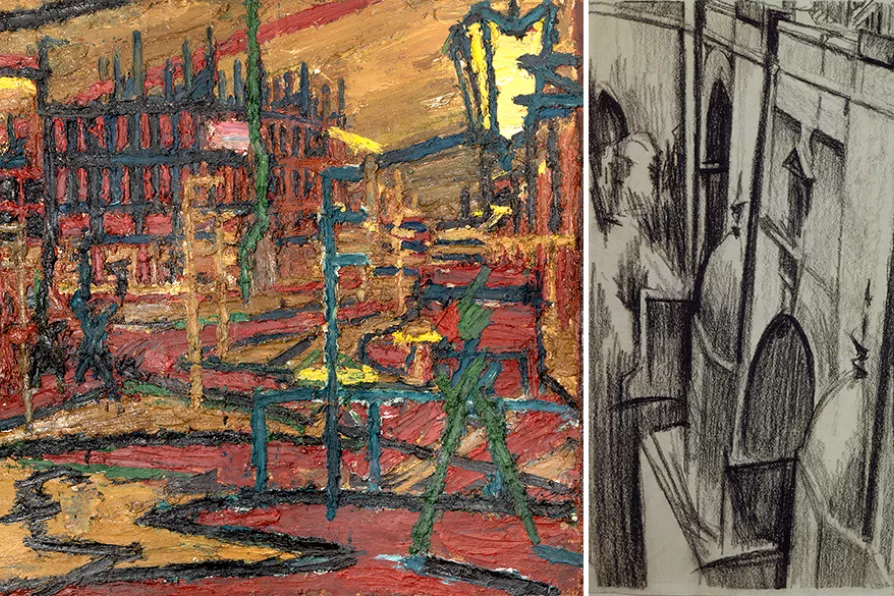GEOFF BOTTOMS appreciates the local touch brought to a production of Dickens’s perennial classic

 (L) Frank Auerbach, Mornington Crescent with the Statue of Sickert’s father in law, Cobden (1966); David Bomberg, The Bridge At Ronda
[Pics: Copyright Daniel Katz Gallery London]
(L) Frank Auerbach, Mornington Crescent with the Statue of Sickert’s father in law, Cobden (1966); David Bomberg, The Bridge At Ronda
[Pics: Copyright Daniel Katz Gallery London]
THE sad news that the artist Frank Auerbach died this week invites the occasion to examine the way he, and a few others, dedicated themselves as a revolutionary cell within British art to a remarkable initiative that was lead by David Bomberg, the artist turned part-time teacher, at the Borough Polytechnic in the immediate aftermath of WW2.
Auerbach himself, the orphaned child of German Jews who perished in the Holocaust, was just 17 when he joined Bomberg’s classes. He hadn’t seen his parents since April 1939 and had been raised in the “liberated, puritanical” (as he put it) atmosphere of Bunce Court, a private school that had offered a haven for a limited number of Jewish child refugees. He aspired to be an actor or painter, and was desperately poor.
He had a place at St Martin’s, a “proper” art school, but the course didn’t start until the autumn and the Borough, in the form of Bomberg’s part-time classes offered the chance for life-drawing.

Peter Mitchell's photography reveals a poetic relationship with Leeds













